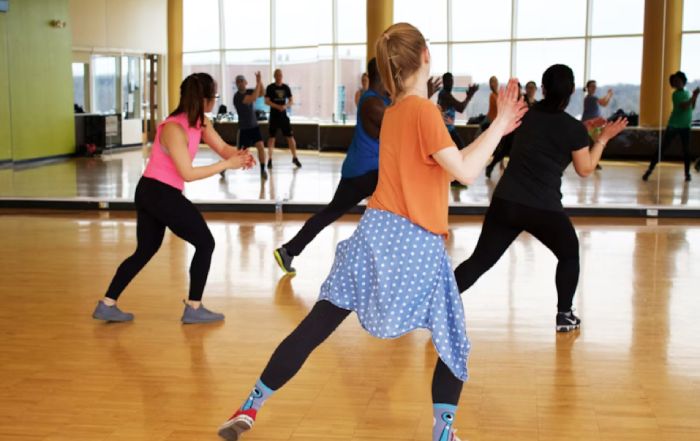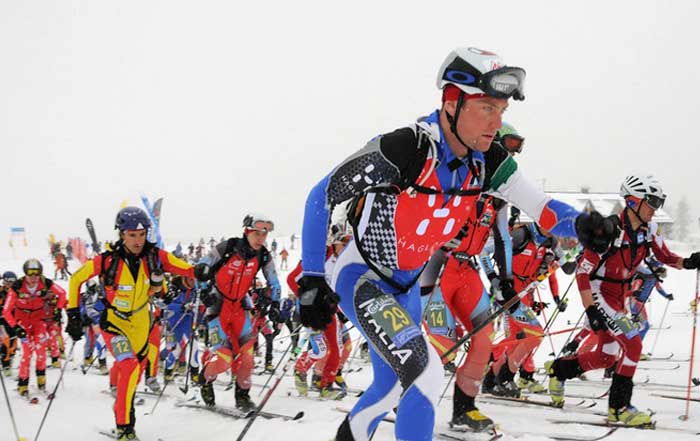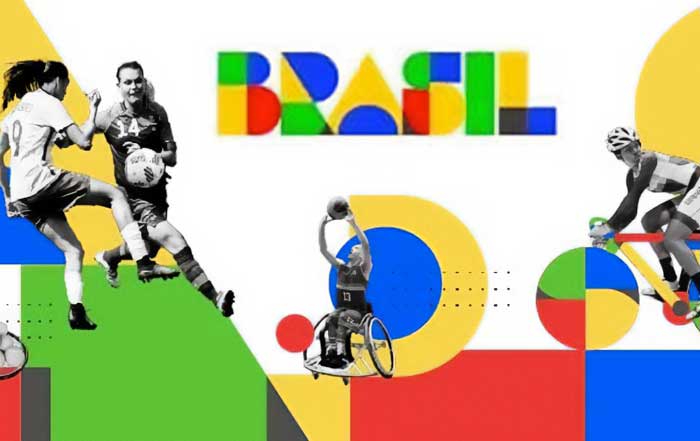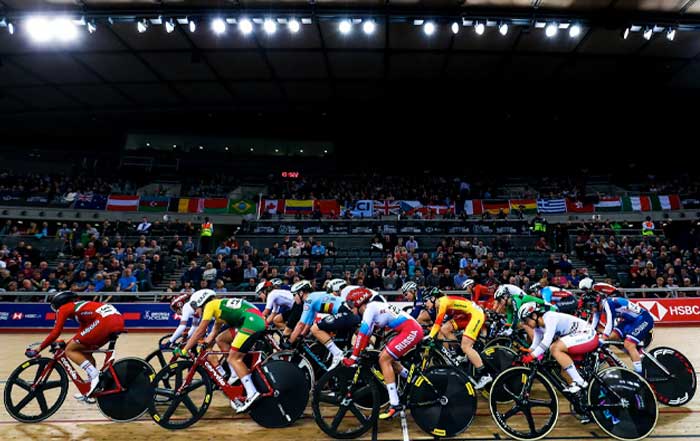The Netherlands, often celebrated for its cycling culture and reputation as one of the healthiest nations in Europe, is witnessing a profound transformation in how people approach fitness. While traditional cycling remains a cornerstone of Dutch daily life, the modern era has ushered in new demands: shorter workweeks, hybrid jobs, urban living, and a cultural emphasis on efficiency and sustainability. These trends align perfectly with the rise of High-Intensity Interval Training (HIIT). Once an obscure training methodology practiced by athletes and coaches, HIIT has exploded into mainstream adoption in the Netherlands.
In 2025, Dutch gyms, corporations, schools, and even municipalities are embracing HIIT as more than just a workout—it has become a cultural, technological, and social phenomenon. At its core, HIIT revolves around alternating short bursts of intense physical activity with periods of active recovery. The adaptability of this method—whether performed using bodyweight exercises, rowing machines, cycling, or running—makes it particularly suited for the Dutch lifestyle. With its blend of efficiency, inclusivity, and results-driven outcomes, HIIT is redefining how the Dutch view personal health, workplace productivity, and national well-being.
This article, prepared exclusively for readers of SportyFusion, explores the future of HIIT in the Netherlands. It investigates the historical roots of interval training in Europe, the scientific foundations that make it effective, the technological ecosystem supporting its growth, and the cultural factors shaping its popularity. By examining Dutch innovation in fitness, sustainability, and health policy, it becomes clear that the Netherlands is uniquely positioned to lead the world in integrating HIIT into everyday life.
Historical Roots of HIIT in the European Context
HIIT may be a global phenomenon today, but its early roots in Europe set the stage for its acceptance in the Netherlands. The concept of interval training dates back to the mid-20th century, when athletes in Scandinavia and Central Europe began experimenting with structured bursts of exertion to improve cardiovascular endurance. In Finland, distance runners like Paavo Nurmi became famous for interval-based sessions that allowed them to dominate international competitions. Later, German coaches refined these methods, introducing structured sprint-rest cycles to athletes preparing for the Olympics.
By the 1990s, interval training had reached Dutch elite sports. Coaches working with KNVB (the Royal Dutch Football Association) and the Royal Dutch Cycling Union experimented with high-intensity drills to improve players’ speed and endurance without overextending their training schedules. Dutch athletes preparing for global events adopted interval formats because they aligned with the nation’s reputation for meticulous, science-backed preparation.
In the 2000s, with the publication of numerous scientific studies showing HIIT’s effectiveness for general health—not just elite performance—the method began to move into gyms and boutique studios. Dutch fitness brands, such as Basic-Fit, were among the first to mainstream interval-style group classes across the country, making them accessible to the average person in Amsterdam, Rotterdam, Utrecht, and The Hague.
This historical trajectory reveals why HIIT feels so natural to the Dutch: it aligns with both their athletic traditions and cultural values around pragmatism and innovation.
Cultural Foundations: Why HIIT Fits Dutch Society
The Netherlands is consistently ranked among the healthiest and most active countries in the world. Daily cycling, widespread access to public fitness facilities, and a collective cultural belief in preventive health have created a fertile ground for HIIT’s success. But beyond health statistics, several deeper cultural factors explain why HIIT resonates so strongly with the Dutch:
Efficiency: Dutch culture values practicality and time management. HIIT’s promise of maximum results in minimal time—often in as little as 20 minutes—fits perfectly with busy urban professionals and parents balancing work, family, and leisure.
Collective Motivation: Group training formats are extremely popular in the Netherlands. HIIT classes emphasize community, shared effort, and collective achievement, reflecting the Dutch preference for collaboration over individualism.
Innovation-Friendly Attitudes: The Dutch are early adopters of technology. Wearable fitness trackers, smart gyms, and hybrid digital-physical training formats have been quickly embraced, making it easier for HIIT programs to integrate cutting-edge tools.
Balance and Well-Being: While intensity is central to HIIT, its flexible structure allows Dutch trainers to emphasize moderation and sustainability, reflecting the national ethos of balance rather than excess.
For readers exploring the cultural side of fitness, more insights can be found on culture, where the intersection of health trends and societal norms is explored in depth.
The Scientific Foundation of HIIT
The appeal of HIIT is not simply cultural—it is backed by decades of scientific research. The Netherlands, with its world-class medical universities and sports science research centers, has contributed significantly to validating HIIT’s effectiveness.
Studies conducted at Amsterdam UMC and Leiden University Medical Center have shown that HIIT provides benefits comparable to, or even greater than, traditional endurance training. These include:
Cardiovascular Improvements: Short, high-intensity bursts stimulate the heart and lungs in ways that enhance aerobic and anaerobic capacity.
Metabolic Benefits: HIIT increases insulin sensitivity and fat oxidation, making it an effective tool for combating diabetes and obesity.
Time Efficiency: In as little as 20 minutes, participants can achieve fitness outcomes equivalent to an hour of steady-state exercise.
Mental Health Gains: Endorphin release during high-intensity exertion has been shown to reduce stress, anxiety, and symptoms of depression.
One of the reasons HIIT has become central to Dutch health programs is its scalability. Unlike traditional gym routines that require equipment and long time commitments, HIIT can be performed in almost any environment, from a small apartment to a local park. This makes it an attractive option for both urban residents and people living in smaller towns across the Netherlands.
The integration of HIIT into healthcare strategies underscores its growing importance. Dutch doctors increasingly prescribe interval-style exercise to patients as a preventive measure. Meanwhile, insurance providers are offering incentives for individuals who participate in structured HIIT programs, recognizing the potential savings in long-term healthcare costs.
Readers interested in health implications can explore health, where discussions on fitness and well-being converge with cutting-edge science.
Technological Integration: Making HIIT Smarter
Technology is perhaps the most transformative factor shaping the future of HIIT in the Netherlands. A country renowned for its innovation ecosystems, the Netherlands has fostered a thriving community of startups, research labs, and established corporations exploring digital fitness solutions.
Wearables and Real-Time Feedback
Smartwatches, fitness trackers, and biometric monitors have become essential to HIIT training. Devices from companies like Garmin, Polar, and Fitbit are popular in the Dutch market. These tools allow users to measure heart rate zones, recovery periods, calorie expenditure, and stress levels in real time.
In Rotterdam and Utrecht, boutique fitness studios are even integrating heart-rate displays on large screens, enabling participants to see their performance in real time and adjust their effort accordingly. This collective gamification approach encourages motivation and accountability, reinforcing community-driven training environments.
Hybrid and Virtual Training Platforms
The Netherlands has one of the highest rates of internet penetration in Europe, making digital fitness adoption particularly seamless. Dutch software firms like Virtuagym have built global reputations by offering virtual HIIT classes, training apps, and nutrition tracking tools. Hybrid training models—where participants can join in person or online—are now a fixture of Dutch fitness culture.
This flexibility reflects the country’s hybrid working culture, where professionals often split time between home and the office. A 25-minute HIIT session streamed during lunch break has become a routine part of the Dutch remote worker’s day.
Gamification and Virtual Reality
Gamification is one of the most exciting frontiers for HIIT in the Netherlands. Studios in Amsterdam are experimenting with virtual reality (VR) HIIT classes, where participants box, run, or jump in immersive digital environments. These sessions not only improve physical fitness but also offer entertainment, reducing the dropout rates that often plague traditional fitness programs.
Dutch universities are conducting research on how VR-based HIIT can improve adherence among younger populations, particularly teenagers who may otherwise avoid structured exercise. The integration of gaming principles into HIIT connects fitness with broader lifestyle trends, as discussed on gaming.
Corporate Wellness and Workplace Integration
The Netherlands is at the forefront of integrating HIIT into workplace culture. Large multinational corporations headquartered in Amsterdam, The Hague, and Eindhoven are increasingly offering employees structured HIIT programs as part of their wellness initiatives.
Companies like Philips and Unilever have invested in onsite gyms, subsidized fitness memberships, and digital HIIT apps that employees can access remotely. These programs are framed not just as perks, but as strategic investments in productivity, creativity, and resilience.
Hybrid work has accelerated the adoption of short, intense workouts that can fit into a busy schedule. Employers encourage staff to join 15- to 20-minute HIIT breaks during workdays, often positioning them as “energy resets” rather than optional leisure. By 2025, many Dutch companies have gone further, integrating HIIT into team-building events and leadership training programs, highlighting the method’s potential to foster collaboration and resilience.
This shift mirrors broader changes in workplace culture, explored in detail on business.
Inclusivity: HIIT for Every Age and Ability
HIIT was once thought of as a training style reserved for highly conditioned athletes or fitness enthusiasts. In the Netherlands, however, the methodology is being reshaped into an inclusive model designed to engage people across all age groups and abilities. Dutch trainers and health organizations are making a concerted effort to ensure that HIIT is not just a trend for the urban elite but a sustainable practice that contributes to the overall health of the population.
HIIT for Older Adults
The aging population in the Netherlands presents both a challenge and an opportunity. With a large proportion of citizens over 60, there is growing demand for fitness models that prevent age-related diseases, improve mobility, and enhance quality of life. Dutch fitness centers and health organizations are tailoring HIIT programs for seniors, focusing on low-impact movements, shorter bursts of intensity, and longer recovery periods.
Research at Erasmus University Medical Center has highlighted that interval training can significantly improve cardiovascular function and muscle retention among older adults. Community gyms in cities like Leiden and Haarlem now run senior-friendly HIIT sessions where exercises are adapted to prevent joint strain and falls. Instead of plyometric jumps or sprints, participants might use resistance bands, stationary bikes, or water aerobics to achieve similar interval benefits.
HIIT for Youth and Schools
Youth engagement is another vital aspect of HIIT adoption in the Netherlands. Rising concerns about screen time and sedentary lifestyles among teenagers have motivated schools and community organizations to experiment with HIIT-inspired physical education. Schools in Amsterdam and Rotterdam are introducing 10-minute micro-HIIT sessions between classes to energize students and improve focus.
The Dutch government, through initiatives such as Gezond Leven (Healthy Living), is exploring how HIIT can be embedded into national education policies. Pilot programs have shown that short bursts of activity improve cognitive performance, reduce behavioral issues, and encourage long-term participation in physical activity. The adaptability of HIIT makes it easy for schools to implement without requiring extensive equipment.
Inclusive Fitness and Accessibility
HIIT is also being reshaped to serve individuals with physical disabilities. Adaptive interval training programs—using wheelchairs, resistance machines, or specially designed equipment—are gaining visibility in Dutch rehabilitation centers and inclusive gyms. The emphasis is on creating equal access to intensity, allowing people with different capabilities to train alongside each other in the same class.
This focus on inclusivity reflects the Dutch ethos of social equality and collective participation. By making HIIT accessible to seniors, children, and people with disabilities, the Netherlands is ensuring that the method evolves into a nationwide tool for health improvement. Readers can explore more about how social inclusion intersects with fitness on social.
1950s
European Origins
Finnish runners like Paavo Nurmi pioneer interval training, setting foundations for modern HIIT methods across Europe.
1990s
Elite Sports Adoption
KNVB and Royal Dutch Cycling Union implement high-intensity drills for athletes preparing for international competitions.
2000s
Scientific Validation
Research at Amsterdam UMC and Leiden University confirms HIIT's effectiveness for cardiovascular health and metabolic benefits.
2010s
Mainstream Breakthrough
Basic-Fit and boutique studios introduce HIIT group classes nationwide, making interval training accessible to all Dutch residents.
2020s
Digital Revolution
Virtuagym and hybrid platforms integrate HIIT into remote work culture with VR experiences and AI-powered personalization.
2025
Healthcare Integration
Doctors prescribe HIIT as preventive medicine while insurers offer rewards for participation in structured programs.
2030+
Cultural Standard
HIIT becomes embedded in workplace policy, education curricula, and municipal health initiatives across the Netherlands.
65%Dutch gym-goers under 40 do HIIT weekly
20minAverage HIIT session duration
75%Projected gym members doing HIIT by 2030
#1Europe's healthiest nations
Community-Driven HIIT: Outdoor and Urban Fitness
While Dutch gyms and corporate programs play a crucial role, much of HIIT’s future lies in community-driven initiatives that bring exercise into public spaces. The Netherlands is known for its parks, bike lanes, and public infrastructure that promote activity. Municipalities are increasingly leveraging these assets to create HIIT-friendly environments.
Outdoor HIIT in Parks
In Amsterdam’s Vondelpark, Rotterdam’s Kralingse Bos, and Utrecht’s Wilhelminapark, organized outdoor HIIT sessions are becoming regular community events. Trainers lead free or low-cost group workouts, often combining interval runs with bodyweight circuits. These gatherings foster social connections while lowering barriers to entry for people who might not join a gym.
Urban HIIT Installations
Municipalities are also investing in outdoor gym equipment that supports interval-style training. From pull-up bars to functional training rigs, these installations encourage spontaneous group workouts. Local governments view these initiatives as preventive health measures that reduce long-term healthcare costs. Some cities are even experimenting with digital kiosks that guide residents through timed HIIT circuits.
Digital Communities
Beyond physical gatherings, digital platforms are fueling virtual communities centered around HIIT. Apps and social media groups allow Dutch residents to join challenges, track progress, and share achievements. Platforms like Virtuagym and TrainMore are building ecosystems where community interaction motivates consistency, reinforcing the idea that HIIT is as much about belonging as it is about individual effort.
Environmental Sustainability: The Green Fitness Revolution
One of the most distinctive aspects of HIIT’s future in the Netherlands is its alignment with the country’s commitment to sustainability. As climate change and environmental awareness take center stage, the fitness industry is being reimagined through a green lens. HIIT, with its minimal reliance on large equipment and its adaptability to bodyweight training, is naturally suited to this transformation.
Eco-Friendly Gyms
Dutch gyms are pioneering eco-friendly operations. Facilities in Amsterdam and Utrecht are integrating renewable energy sources, recycling water systems, and sustainable building materials. HIIT studios are particularly well-positioned, as many require only open space, mats, and lightweight equipment, which reduces energy consumption compared to heavy cardio machines.
Some gyms are even taking sustainability further by using energy-harvesting equipment. For instance, stationary bikes and treadmills are being retrofitted to generate electricity during workouts, feeding power back into the grid. HIIT programs that incorporate cycling sprints are now doubling as micro-power stations, symbolizing the merging of personal health with environmental responsibility.
Outdoor and Low-Impact HIIT
The popularity of outdoor HIIT also aligns with environmental goals. Training in public spaces reduces reliance on energy-intensive facilities and reinforces the Dutch love for nature. Parks in cities like Groningen and Eindhoven now serve as both recreational spaces and fitness arenas, demonstrating how urban planning and exercise can coexist sustainably.
Readers interested in the intersection of fitness and green initiatives can explore environment, where sustainability is discussed in the context of sports and lifestyle.
Case Studies: Dutch Startups and Innovation in HIIT
The Netherlands has become a hotspot for fitness innovation, with startups and companies pushing the boundaries of how HIIT is delivered, tracked, and experienced.
Virtuagym
Headquartered in Amsterdam, Virtuagym has become one of Europe’s leading fitness software providers. Their platform allows gyms and trainers to design personalized HIIT programs, track progress, and integrate nutrition coaching. The company’s global reach, combined with its Dutch roots, showcases how the Netherlands is shaping fitness innovation worldwide.
TrainMore
Another Dutch brand, TrainMore, is disrupting the gym model by rewarding members with discounts for frequent visits. Many of their group classes are HIIT-focused, designed to maximize engagement while promoting loyalty. Their urban gyms appeal particularly to young professionals in Amsterdam and Rotterdam.
FitNation
FitNation, an event and digital platform, serves as a hub for fitness startups and entrepreneurs. Many sessions and panels at their annual conferences focus on HIIT, exploring how technology, science, and community engagement are reshaping the future of interval training.
Boutique Studios and VR Startups
In addition to larger brands, boutique studios and startups are pioneering VR-integrated HIIT, gamified group workouts, and immersive audio-visual environments. These innovations cater to a generation that values experiences as much as physical outcomes.
Mental Health and HIIT: A Dutch Perspective
The Netherlands has a progressive approach to mental health, and HIIT is increasingly being recognized as a therapeutic tool. Research indicates that short, intense workouts release endorphins and neurotransmitters that alleviate stress and anxiety. Dutch therapists and wellness coaches are incorporating interval sessions into treatment plans for individuals struggling with mild depression or burnout.
Corporate wellness programs are also using HIIT as a tool to combat stress among employees. A 15-minute HIIT session before or after work can improve mood, sharpen focus, and reduce workplace fatigue. The emphasis is not only on physical strength but on building mental resilience.
For deeper insights into the link between performance and well-being, readers can visit performance, which explores how physical activity shapes human potential.
The Social Fabric of HIIT in the Netherlands
HIIT in the Netherlands is more than a fitness method; it is becoming part of the social fabric of communities. Participation in group classes, outdoor events, and digital challenges creates connections that extend beyond exercise. For many Dutch residents, HIIT represents a form of social integration, where individuals of different ages, backgrounds, and abilities can work together toward a common goal.
Studios and municipalities are framing HIIT as a tool to strengthen community resilience, reduce healthcare disparities, and promote healthier lifestyles at scale. The collective energy of interval training resonates deeply with Dutch values of cooperation and equality.
Adoption Trends: Data and Market Insights
The future of HIIT in the Netherlands can be better understood by looking at measurable adoption trends. The Dutch fitness market has grown significantly in the last decade, with Basic-Fit, headquartered in Hoofddorp, becoming Europe’s largest low-cost fitness chain. Within these facilities, HIIT classes consistently rank among the most popular offerings, often filling up faster than traditional cardio or strength classes.
Market research by EuropeActive suggests that more than 65% of Dutch gym-goers under 40 participate in some form of HIIT at least once a week. Among urban professionals, the percentage is even higher, fueled by the demand for time-efficient workouts. Additionally, surveys conducted in 2024 revealed that more than half of respondents aged 18–35 in Amsterdam and Rotterdam had engaged with digital HIIT programs at least once per month, showing the growing integration of technology into exercise routines.
Another notable trend is the rise of family-centered HIIT. Parents in Dutch suburbs are enrolling in family-oriented classes where adults and children can exercise together, reinforcing the message that HIIT is adaptable to all ages. This development mirrors broader European patterns but is particularly strong in the Netherlands, where family-oriented community initiatives are prioritized.
As fitness becomes more integrated into daily life, HIIT has transitioned from being a novelty to a mainstream lifestyle choice, solidifying its place in the Dutch wellness economy.
Policy and Public Health Integration
One of the most significant factors shaping the future of HIIT in the Netherlands is its potential integration into public health policy. The Dutch government has long invested in preventive health strategies, recognizing that lifestyle-related illnesses such as obesity, type 2 diabetes, and cardiovascular disease pose significant social and economic costs.
HIIT in Healthcare
Healthcare professionals are increasingly prescribing HIIT to patients as part of lifestyle intervention programs. Clinics in Utrecht and Groningen are running pilot programs where patients at risk of metabolic disorders participate in supervised interval training sessions. These programs are proving highly effective, reducing reliance on medication while improving long-term health outcomes.
Insurance providers are also playing a role. Several Dutch health insurers now offer discounts and rewards for policyholders who engage in structured HIIT programs. Data integration from wearables allows insurers to verify activity levels, linking financial incentives with healthier behaviors.
Municipal Initiatives
Cities like Rotterdam and Eindhoven are exploring municipal-level HIIT programs, using outdoor installations and guided group sessions as part of their urban health initiatives. These efforts are designed to encourage residents to incorporate movement into their daily lives, contributing to a healthier, more active population.
By embedding HIIT into public policy, the Netherlands is moving toward a model where fitness is not just a personal choice but a collective responsibility. Readers can explore more about the role of health initiatives on health and social, which detail how fitness intersects with broader public well-being.
HIIT and Sports Performance
While HIIT is firmly established in mainstream fitness, its role in elite sports performance is equally important. The Netherlands has a proud tradition of producing world-class athletes in football, speed skating, cycling, and field hockey. Coaches across these sports are using HIIT to develop endurance, agility, and recovery capacity.
Football and Field Hockey
In Dutch football, HIIT drills have become essential for developing explosive power and match stamina. Teams under the KNVB use interval training to simulate game intensity, ensuring players can handle repeated sprints and transitions. Similar methods are applied in field hockey, where athletes must sustain high-intensity bursts throughout matches.
Cycling and Speed Skating
The Netherlands’ dominance in cycling and speed skating also benefits from HIIT methodologies. Sprint intervals on bikes or skates are used to improve anaerobic capacity, allowing athletes to maintain peak speed in critical moments. Dutch speed skaters, preparing for international competitions, often train in HIIT formats that combine resistance training with high-intensity laps on the ice.
Data-Driven Performance
What distinguishes Dutch HIIT applications in sports is the integration of sports science and data analytics. Teams use GPS trackers, lactate monitoring, and AI-driven performance models to design interval training tailored to individual needs. This approach not only maximizes performance but also minimizes injury risks, a concern in high-intensity formats.
For readers interested in how sports performance is influenced by training innovations, more can be explored in performance and sports.
Global Comparisons: How the Netherlands Stands Out
The rise of HIIT is a global trend, but the Netherlands brings a unique perspective that distinguishes it from other markets such as the United States, United Kingdom, and Asia.
United States
In the US, HIIT is often commercialized through branded franchises like Orangetheory Fitness or CrossFit, with strong emphasis on intensity and competition. While effective, these formats can sometimes alienate beginners or lead to overtraining. In contrast, the Dutch model emphasizes balance, inclusivity, and community, making HIIT more sustainable and widely accessible.
United Kingdom and Germany
The UK and Germany also have strong HIIT markets, with boutique studios dominating urban centers. However, the Netherlands differs in its integration of public policy and sustainability. German gyms may lead in equipment innovation, but Dutch municipalities are more proactive in embedding HIIT into public spaces and healthcare.
Asia and Beyond
Countries like Singapore and Japan are adopting HIIT through digital apps and boutique studios, but cultural barriers around group training and intensity often slow mainstream adoption. The Netherlands’ collaborative culture, combined with its openness to new methods, allows for smoother integration into society.
This positioning makes the Netherlands a global testbed for fitness innovation. International brands frequently trial new HIIT formats in Dutch markets before rolling them out elsewhere.
For readers seeking more on global perspectives, world provides broader context on how fitness trends evolve internationally.
The Role of Technology and AI in Future HIIT
The next phase of HIIT in the Netherlands will be shaped by the integration of artificial intelligence and personalized analytics.
AI Personalization
Dutch startups are developing AI-powered training apps that analyze user data from wearables to create personalized HIIT routines. These apps adjust intensity, rest intervals, and recovery strategies based on real-time biometrics, making workouts safer and more effective.
VR and Immersive Fitness
Virtual reality, already used in some Amsterdam studios, is expanding into more immersive HIIT experiences. Users can engage in interval boxing matches, cycling sprints through virtual landscapes, or full-body combat simulations. These innovations appeal to younger demographics and gamers, blurring the line between fitness and entertainment.
Integration with Healthcare
AI tools are also being integrated into healthcare, with physicians prescribing personalized HIIT regimens monitored through connected devices. This ensures that patients not only receive medical guidance but also follow safe, data-driven fitness programs.
For a deeper look at how technology transforms exercise, see technology, which covers the cutting edge of digital fitness innovation.
Mental and Emotional Resilience
Beyond physical outcomes, HIIT is emerging as a powerful tool for mental and emotional resilience in Dutch society.
Burnout Prevention: In a culture where work-life balance is highly valued, HIIT is used as a mechanism to prevent burnout. Short, intense sessions provide both physical exertion and mental resets.
Stress Relief: Scientific studies in the Netherlands confirm that HIIT sessions reduce cortisol levels and enhance mood. Dutch wellness coaches increasingly frame HIIT as a tool for emotional regulation.
Community Belonging: Group HIIT classes foster connection, combating loneliness and social isolation—issues that modern urban societies often face.
This holistic approach ensures HIIT is not seen merely as exercise, but as an integral element of lifestyle and well-being, linking closely with lifestyle.
Opportunities and Risks
The rapid growth of HIIT in the Netherlands creates both opportunities and risks.
Opportunities
Nationwide Health Impact: Scaling HIIT could significantly reduce the burden of chronic diseases.
Economic Growth: Fitness startups, gyms, and technology providers stand to benefit from rising demand.
Global Leadership: The Netherlands can position itself as a global leader in sustainable, inclusive fitness innovation.
Risks
Overtraining: Without proper guidance, HIIT can lead to injury or burnout.
Digital Quality Control: The proliferation of online HIIT programs raises questions about trainer qualifications and program safety.
Accessibility Gaps: While inclusivity is a focus, ensuring equal access across rural areas remains a challenge.
Addressing these risks will be crucial for ensuring HIIT’s long-term sustainability.
Looking Ahead: HIIT in 2030 and Beyond
The trajectory of HIIT in the Netherlands suggests that by 2030 it will no longer be considered a “fitness trend” but a deeply embedded element of Dutch daily life. Forecasts from the Dutch Fitness & Health Institute project that more than 75% of gym members in the Netherlands will participate in regular HIIT sessions within the next five years, with strong adoption across corporate wellness, public healthcare, and community-driven initiatives.
By 2035, HIIT could evolve into a multi-dimensional practice that spans physical, mental, and environmental well-being. Workouts may take place in smart gyms powered by renewable energy, guided by AI coaches, and embedded into healthcare prescriptions. The Dutch reputation for blending efficiency with innovation suggests that HIIT will not just remain popular—it will redefine how fitness itself is structured.
Corporate Scenarios: HIIT as a Workplace Standard
The role of HIIT in the workplace will continue to expand. Dutch corporations have already positioned themselves at the forefront of employee wellness, but the next decade may see HIIT becoming a non-negotiable standard rather than an optional perk.
Mandatory Wellness Breaks: Companies could adopt policies mandating short daily HIIT sessions during work hours, similar to scheduled coffee breaks. This reflects the Dutch commitment to balance and productivity.
Hybrid Integration: As hybrid work persists, digital HIIT apps will be fully integrated into workplace software, with companies providing access to virtual trainers and wellness dashboards.
Performance Metrics: Employers may begin to link HIIT participation to professional development, framing it as a form of leadership training that builds resilience and focus.
For readers following shifts in business and work culture, more insights can be found on business and jobs.
HIIT in Education and Youth Development
Looking ahead, Dutch schools may become incubators of HIIT culture. By 2030, education policies could include structured HIIT as part of national curricula, with children engaging in micro-workouts throughout the day. Studies already show that short bouts of exercise improve focus and academic performance, making HIIT a natural fit for the education system.
Universities are also expected to embrace HIIT not only as a fitness option but as a research field. With institutions like Vrije Universiteit Amsterdam and Eindhoven University of Technology leading sports science programs, HIIT could inspire advances in physiology, biomechanics, and mental health research.
This approach ensures that future generations grow up viewing HIIT not as an extracurricular activity but as a normal part of daily routine, much like cycling.
Global Leadership: The Netherlands as a Fitness Pioneer
The global fitness industry is watching the Netherlands closely. The Dutch approach to HIIT—sustainable, inclusive, and technology-driven—offers a model that could be replicated worldwide.
Policy Integration: Few countries have integrated fitness into healthcare and municipal policy as effectively as the Netherlands. This gives the Dutch a leadership role in showing how governments can encourage preventive health.
Innovation Hub: With startups like Virtuagym and gym networks like TrainMore and Basic-Fit, the Netherlands is exporting fitness innovation globally.
Environmental Leadership: Dutch eco-friendly gyms and outdoor HIIT initiatives align with the international push for sustainable business practices.
International fitness brands often test new formats in Dutch markets before scaling globally, confirming the country’s role as a laboratory of fitness innovation. This leadership mirrors the Netherlands’ broader influence in global sustainability and technology, detailed further on world.
Cultural Sustainability: Keeping HIIT Authentic
A critical factor for the future will be maintaining authenticity. While global commercialization can sometimes dilute the spirit of fitness movements, the Dutch focus on community, equality, and balance provides a safeguard. Trainers, policymakers, and innovators will need to ensure that HIIT remains accessible, inclusive, and sustainable, avoiding the pitfalls of over-commercialization or exclusivity.
By framing HIIT as a collective, socially integrated practice rather than a competitive elite sport, the Netherlands ensures that its long-term adoption will remain strong. The sense of togetherness built in HIIT classes—whether in gyms, parks, or workplaces—cements its place as part of Dutch identity.
The Road to 2035: Opportunities Ahead
Looking ahead to 2035, the future of HIIT in the Netherlands can be summarized through key opportunities:
Healthcare Transformation: By embedding HIIT into medical prescriptions and insurance systems, the Netherlands can reduce the burden of chronic diseases.
Technological Integration: AI, VR, and wearable technologies will make HIIT smarter, safer, and more personalized.
Community Empowerment: Outdoor and inclusive HIIT initiatives will strengthen community ties and reduce health disparities.
Environmental Impact: Sustainable fitness solutions, including energy-generating workouts, will position HIIT as part of the climate solution.
Global Leadership: The Netherlands will inspire other nations to rethink how fitness can be integrated into policy, business, and culture.
For those seeking to explore broader environmental and ethical dimensions of fitness, environment and ethics provide deeper reflections.
HIIT as a Cornerstone of Dutch Fitness
The story of HIIT in the Netherlands is not just about faster workouts or stronger bodies—it is about a nation aligning fitness with its deepest cultural values. Efficiency, inclusivity, innovation, and sustainability are woven into the Dutch character, and HIIT embodies all of these traits.
By 2025, HIIT has already moved far beyond gyms. It is integrated into healthcare, workplaces, schools, and communities. By 2035, it will likely stand as a cornerstone of Dutch lifestyle, a practice that promotes not just physical health but also mental well-being, community strength, and environmental sustainability.
For readers of SportyFusion, the rise of HIIT in the Netherlands offers a lens into how fitness can transform societies when guided by values of balance, innovation, and collective well-being. Whether you are an athlete seeking performance gains, a professional balancing a hybrid career, or a community member looking for connection, HIIT in the Netherlands provides both inspiration and a blueprint for the future of fitness worldwide.
Explore more on fitness, training, sports, and performance to stay updated with the evolving world of fitness, culture, and innovation.










